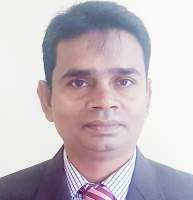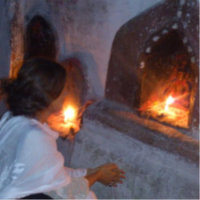- Sanitation systems
- Faecal sludge management (FSM)
- FSM Planning tools, toolboxes and guidelines
- Implementer's Guide to Lime Stabilization for Septage Management in the Philippines
Implementer's Guide to Lime Stabilization for Septage Management in the Philippines
36.6k views
- dmrobbins10
-
 Topic Author
Topic Author- Improving life and livelihood through decentralized wastewater management
Less- Posts: 56
- Karma: 10
- Likes received: 33
Re: Implementer's Guide to Lime Stabilization for Septage Management in the Philippines
Hi Sahid,
Nice to know that the technology is being used. I don't know of any type of graph as you suggest. One reason is that there are different qualities of hydrated lime. Also I would think that the concentration of organic matter in the waste would have an impact as well on the quantity of hydrated lime required to achieve the desired results. For that reason, I think small scale trials are useful for judging how much lime to add for a particular situation. Perhaps some of the other readers may know of some graph that could be used for this purpose. One suggestion though would be to make sure that it is hydrated lime (calcium hydroxide) that is being used and not agricultural lime (calcium carbonate).
Good luck and please share the results when they are available,
Dave
Nice to know that the technology is being used. I don't know of any type of graph as you suggest. One reason is that there are different qualities of hydrated lime. Also I would think that the concentration of organic matter in the waste would have an impact as well on the quantity of hydrated lime required to achieve the desired results. For that reason, I think small scale trials are useful for judging how much lime to add for a particular situation. Perhaps some of the other readers may know of some graph that could be used for this purpose. One suggestion though would be to make sure that it is hydrated lime (calcium hydroxide) that is being used and not agricultural lime (calcium carbonate).
Good luck and please share the results when they are available,
Dave
David M. Robbins
This email address is being protected from spambots. You need JavaScript enabled to view it.
This email address is being protected from spambots. You need JavaScript enabled to view it.
Please Log in to join the conversation.
You need to login to reply- sahidul93
-

- Better Environment, Better Life
Less- Posts: 20
- Likes received: 3
Re: Implementer's Guide to Lime Stabilization for Septage Management in the Philippines
Hi Robin,
Nice to hear from you. Here in refugee camps, many organisations are using lime in pit, barrel and in pond for stabilization. But there is no similarities among all of those. NGO forum for Public Health, BRAC, OXFAM, Solidarities, etc. are using lime stabilization system. The amount of using lime differs a lot. That's why I am asking, is there any good graph of using lime at which pH goes upto the desired limit and falls as well.
Thanks a lot.
Sahid
Nice to hear from you. Here in refugee camps, many organisations are using lime in pit, barrel and in pond for stabilization. But there is no similarities among all of those. NGO forum for Public Health, BRAC, OXFAM, Solidarities, etc. are using lime stabilization system. The amount of using lime differs a lot. That's why I am asking, is there any good graph of using lime at which pH goes upto the desired limit and falls as well.
Thanks a lot.
Sahid
Md.Sahidul Islam
Assistant WASH Officer
UNHCR, Cox’s Bazar, Bangladesh
Mobile: +8801712124330
www.unhcr.org
Assistant WASH Officer
UNHCR, Cox’s Bazar, Bangladesh
Mobile: +8801712124330
www.unhcr.org
Please Log in to join the conversation.
You need to login to replyRe: Implementer's Guide to Lime Stabilization for Septage Management in the Philippines
Dear all,
both publications (1) City of Tacloban Septage Management Plant: Construction Plans and Bill of Quantities (July 2015)
(2) Achieving Total Sanitation, Part I: Emergency Response (September 2015) are now available in SuSanA library. To download, please go to this link .
Regards,
Ainul on behalf of the SuSanA secretariat.
both publications (1) City of Tacloban Septage Management Plant: Construction Plans and Bill of Quantities (July 2015)
(2) Achieving Total Sanitation, Part I: Emergency Response (September 2015) are now available in SuSanA library. To download, please go to this link .
Regards,
Ainul on behalf of the SuSanA secretariat.
Posted by a member of the SuSanA secretariat held by the GIZ Sector Program Water Policy – Innovations for Resilience
Located at Deutsche Gesellschaft für Internationale Zusammenarbeit (GIZ) GmbH, Bonn, Germany
Follow us on facebook: www.facebook.com/susana.org, linkedin: www.linkedin.com/company/sustainable-sanitation-alliance-susana and twitter: twitter.com/susana_org
Located at Deutsche Gesellschaft für Internationale Zusammenarbeit (GIZ) GmbH, Bonn, Germany
Follow us on facebook: www.facebook.com/susana.org, linkedin: www.linkedin.com/company/sustainable-sanitation-alliance-susana and twitter: twitter.com/susana_org
Attachments:
-
 82.png
(Filesize: 421KB)
82.png
(Filesize: 421KB)
Please Log in to join the conversation.
You need to login to reply- dmrobbins10
-
 Topic Author
Topic Author- Improving life and livelihood through decentralized wastewater management
Less- Posts: 56
- Karma: 10
- Likes received: 33
Re: Implementer's Guide to Lime Stabilization for Septage Management in the Philippines
Dear Sahid,
Sorry for neglecting to respond to your earlier message. As for the project in Myanmar, I don't know what ever happened with that project. Since we did the initial trials, I have not heard any results. That project was in-pit lime stabilization, which seemed to make sense. Adding the lime to the individual pit, to perform some treatment prior to removal. IDEA Cambodia did some work on this as well, which was the inspiration for the Myanmar project. Perhaps someone with more current information can respond.
As to the sequence, what seems to make the most sense is first dewatering of the fecal sludge to the extent possible. The liquids would flow to liquids treatment such as ABR followed by wetlands, then mixing the concentrated solids with lime. This is the method employed at Tacloban City, Philippines to the best of my knowledge, but I haven't heard any results. Perhaps someone with more knowledge about current activities there could reply.
Good luck with your program and please let us know if you utilize the lime stabilization technology, how it works out.
Sorry for neglecting to respond to your earlier message. As for the project in Myanmar, I don't know what ever happened with that project. Since we did the initial trials, I have not heard any results. That project was in-pit lime stabilization, which seemed to make sense. Adding the lime to the individual pit, to perform some treatment prior to removal. IDEA Cambodia did some work on this as well, which was the inspiration for the Myanmar project. Perhaps someone with more current information can respond.
As to the sequence, what seems to make the most sense is first dewatering of the fecal sludge to the extent possible. The liquids would flow to liquids treatment such as ABR followed by wetlands, then mixing the concentrated solids with lime. This is the method employed at Tacloban City, Philippines to the best of my knowledge, but I haven't heard any results. Perhaps someone with more knowledge about current activities there could reply.
Good luck with your program and please let us know if you utilize the lime stabilization technology, how it works out.
David M. Robbins
This email address is being protected from spambots. You need JavaScript enabled to view it.
This email address is being protected from spambots. You need JavaScript enabled to view it.
The following user(s) like this post: sahidul93
Please Log in to join the conversation.
You need to login to reply- Klawitter
-
 Less
Less- Posts: 3
- Likes received: 1
Re: Implementer's Guide to Lime Stabilization for Septage Management in the Philippines
Dear all, it seems that the discussion on Lime Stabilisation (in Philippines) has gained momentum.
Heading the UNICEF WASH Team for Yolanda response 2013-2015 when the lime stabilisation plants for Tacloban were constructed as an emergency option ONLY for bunkhouse and evacuation centres at the peak of the emergency response I would like to refer you to the SUSANA project site providing details on PhATS (Philippines Approach to Total Sanitation in Haiyan affected areas) here at Susana Forum , which provides more details on how the lime stabilisation ponds were set up in two locations as an emergency treatment option and how this links to the overall approach moving from emergency to development within a systems approach to scale up sanitation in partnership with NGOs and government. This set the ground to develop and construct a sophisticated ABR based WWT which is now functional, (to be operated by the City of Tacloban).
Heading the UNICEF WASH Team for Yolanda response 2013-2015 when the lime stabilisation plants for Tacloban were constructed as an emergency option ONLY for bunkhouse and evacuation centres at the peak of the emergency response I would like to refer you to the SUSANA project site providing details on PhATS (Philippines Approach to Total Sanitation in Haiyan affected areas) here at Susana Forum , which provides more details on how the lime stabilisation ponds were set up in two locations as an emergency treatment option and how this links to the overall approach moving from emergency to development within a systems approach to scale up sanitation in partnership with NGOs and government. This set the ground to develop and construct a sophisticated ABR based WWT which is now functional, (to be operated by the City of Tacloban).
This message has attachments files.
Please log in or register to see it.
The following user(s) like this post: JKMakowka
Please Log in to join the conversation.
You need to login to reply- sahidul93
-

- Better Environment, Better Life
Less- Posts: 20
- Likes received: 3
Re: Implementer's Guide to Lime Stabilization for Septage Management in the Philippines
Thanks for your suggestions. Actually reuse is difficult here. As the area is big and road communications is not possible due to hilly areas. Small area based decentrlised treatment will be more wise.
Md.Sahidul Islam
Assistant WASH Officer
UNHCR, Cox’s Bazar, Bangladesh
Mobile: +8801712124330
www.unhcr.org
Assistant WASH Officer
UNHCR, Cox’s Bazar, Bangladesh
Mobile: +8801712124330
www.unhcr.org
Please Log in to join the conversation.
You need to login to replyRe: Implementer's Guide to Lime Stabilization for Septage Management in the Philippines
If you are dealing with mostly solid nearly fresh feces, co-composting might be the better solution. Specifically pipe-aerated windrow composting (to minimize manual handling) in medium sized plants closer to the campsites might be worth testing.
I also posted a presentation on possible use of ATAD systems, but this hasn't been tested under such conditions: forum.susana.org/280-faecal-sludge-treat...treatment-kits#22225
I also posted a presentation on possible use of ATAD systems, but this hasn't been tested under such conditions: forum.susana.org/280-faecal-sludge-treat...treatment-kits#22225
Please Log in to join the conversation.
You need to login to reply- sahidul93
-

- Better Environment, Better Life
Less- Posts: 20
- Likes received: 3
Re: Implementer's Guide to Lime Stabilization for Septage Management in the Philippines
Laxman's last paragraph: This is in connection with an emergency FS treatment plant where the faecal sludge is quite fresh (about three months old) and there is lack of space to store the FS for a longer time before application in the unplanted drying bed. With lime application it is supposed that the FS will become dewater-able quickly in the unplanted drying bed.
I am working with UNHCR at Cox's Bazar, Bangladesh where the largest influx happened recently. Some of our partners have already started lime stabilization as this is a real challenge to manage the excreta rather than septage. As this is more of fresh sludge, the technology might be a good option. Biogas also may be a good option.
I have some experiences on FSM, working in urban areas of Bangladesh. But in Rohingya camps, the scenerio is totally different. Collection is the real challenge as they are staying at the top, middle and valley of the hill, transportation is very difficult.
@Dave Robbins: you mentioned about working in Myanmar. What is the results now?
What are the sequences of lime stabilization: Dewatering, Solid-Liquid separation, Drying bed, Leachate treatment (Constructed Wetland),
Any better idea?
________________________________
Md.Sahidul Islam
Assistant WASH Officer
UNHCR, Cox’s Bazar, Bangladesh
Mobile: +8801712124330
www.unhcr.org
Join our #WithRefugees campaign
Sign the petition today
I am working with UNHCR at Cox's Bazar, Bangladesh where the largest influx happened recently. Some of our partners have already started lime stabilization as this is a real challenge to manage the excreta rather than septage. As this is more of fresh sludge, the technology might be a good option. Biogas also may be a good option.
I have some experiences on FSM, working in urban areas of Bangladesh. But in Rohingya camps, the scenerio is totally different. Collection is the real challenge as they are staying at the top, middle and valley of the hill, transportation is very difficult.
@Dave Robbins: you mentioned about working in Myanmar. What is the results now?
What are the sequences of lime stabilization: Dewatering, Solid-Liquid separation, Drying bed, Leachate treatment (Constructed Wetland),
Any better idea?
________________________________
Md.Sahidul Islam
Assistant WASH Officer
UNHCR, Cox’s Bazar, Bangladesh
Mobile: +8801712124330
www.unhcr.org
Join our #WithRefugees campaign
Sign the petition today
Md.Sahidul Islam
Assistant WASH Officer
UNHCR, Cox’s Bazar, Bangladesh
Mobile: +8801712124330
www.unhcr.org
Assistant WASH Officer
UNHCR, Cox’s Bazar, Bangladesh
Mobile: +8801712124330
www.unhcr.org
Please Log in to join the conversation.
You need to login to reply- dmrobbins10
-
 Topic Author
Topic Author- Improving life and livelihood through decentralized wastewater management
Less- Posts: 56
- Karma: 10
- Likes received: 33
Re: Implementer's Guide to Lime Stabilization for Septage Management in the Philippines
As far as soils application of lime impacted septage effluent, my sense is that as long as the soils dispersal system is designed for the Long Term Acceptance Rate (LTAR), the system should work properly. This would include making sure to consider in the soils dispersal system design the soils texture and structure, consistence, depth to groundwater or other limiting feature, and the landscape slope and position. Here is some guidance: ehs.ncpublichealth.com/oet/docs/cit/oswp...hapter4-Section6.pdf
David M. Robbins
This email address is being protected from spambots. You need JavaScript enabled to view it.
This email address is being protected from spambots. You need JavaScript enabled to view it.
The following user(s) like this post: JKMakowka
Please Log in to join the conversation.
You need to login to reply- kharallaxman
-
 Less
Less- Posts: 37
- Karma: 2
- Likes received: 8
Re: Implementer's Guide to Lime Stabilization for Septage Management in the Philippines
Thank you so much. And what about disposal of lime treated effluent through infiltration underground – what could possibly be the risks and precautions or preparation necessary and where such disposal may be possibly.
Asia WASH Adviser, Terre des hommes (50%)
Please Log in to join the conversation.
You need to login to reply- dmrobbins10
-
 Topic Author
Topic Author- Improving life and livelihood through decentralized wastewater management
Less- Posts: 56
- Karma: 10
- Likes received: 33
Re: Implementer's Guide to Lime Stabilization for Septage Management in the Philippines
I think that conducting the described research would require a pilot scale system that that would treat small quantities of lime impacted effluent at different concentrations to represent different levels of dilution. Ideally the research would take place at an existing fecal sludge treatment plant where there is a steady stream of septage. Testing the ABR should be relatively straight forward using BOD as the indicator of treatment efficiency. A pilot scale multi-celled constructed wetlands could be constructed to test different plant communities that might be better adapted to high pH. A literature review would be useful as there has been some research in utilizing constructed wetlands for treating high pH commercial effluents. Some of these findings might apply to high pH septage effluents. As for portable testing systems, the Hach Company has a broad range of equipment that might be used. Here is a link to their portable BOD testing equipment: (www.hach.com/bodguide).
David M. Robbins
This email address is being protected from spambots. You need JavaScript enabled to view it.
This email address is being protected from spambots. You need JavaScript enabled to view it.
Please Log in to join the conversation.
You need to login to reply- kharallaxman
-
 Less
Less- Posts: 37
- Karma: 2
- Likes received: 8
Re: Implementer's Guide to Lime Stabilization for Septage Management in the Philippines
Dear Robbins and friends,
Could you please suggest how the said research on the effectiveness of ABRs (including Anaerobic Filter) and wetlands for dealing with lime impacted effluent could possibly be carried out in a simple way. And are there any potable equipment you know that could possibly be used for testing necessary parameter onsite? Thank you again for responding and for helping in taking this discussion ahead.
Could you please suggest how the said research on the effectiveness of ABRs (including Anaerobic Filter) and wetlands for dealing with lime impacted effluent could possibly be carried out in a simple way. And are there any potable equipment you know that could possibly be used for testing necessary parameter onsite? Thank you again for responding and for helping in taking this discussion ahead.
Asia WASH Adviser, Terre des hommes (50%)
Please Log in to join the conversation.
You need to login to reply
Share this thread:
- Sanitation systems
- Faecal sludge management (FSM)
- FSM Planning tools, toolboxes and guidelines
- Implementer's Guide to Lime Stabilization for Septage Management in the Philippines
Time to create page: 0.176 seconds








